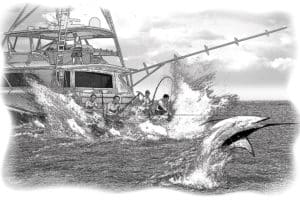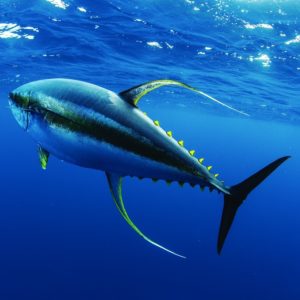
pacific currretns 1230
This New Year will usher in what southern California saltwater anglers have long dreaded: 37 new or modified Marine Protected Areas (MPAs) affecting approximately 354 square miles of prime recreational fishing waters from Point Conception to the Mexican border, delineated in the controversial Marine Life Protection Act (MLPA) implementation process.
California’s north coast MPAs have been in place since September 2007, while the north-central coast MPAs have been in effect since May 2010. The new southern MPAs include eight State Marine Reserves and 29 State Marine Conservation Areas along approximately 300 miles of the state’s most populous coastline and the shores of Santa Catalina Island. Add to this 13 existing MPAs and two special closures in the Channel Islands.
Affecting 15 percent of the region, many of the new MPAs include regulations that are complex and, I believe, onerous. For example, some close down all recreational hook-and-line fishing, while others allow angling for pelagic species only. Still others allow the take of all finfish.
Knowing the boundaries of each MPA is difficult enough, but you also have to interpret the regulations for each zone. Like all regulations, anglers will eventually get used to them, even if they don’t like them. A summary of the regulations can be found here on the California Department of Fish and Game website.
While most California anglers — including yours truly — have decried the recreational fishing closures, it is the mindset behind the whole MLPA implementation that truly bodes ill for recreational fishermen.
Because the state of California is on the financial ropes, it’s MLPA implementation process has been privately funded and administered by the Resource Legacy Fund Foundation (resourcelegacyfund.org). The RLFF receives funds from the likes of the David and Lucile Packard Foundation and the William and Flora Hewlett Foundation, which over the past 10 years have donated $81.5 million and $11.5 million, respectively, to the RLFF.
To me, the whole idea of private financing and administration of a public process is fundamentally inappropriate and rife with the potential for tipping the outcome in favor of those who are paying the freight.
In my opinion, this is exactly what occurred in the MLPA implementation in southern California, as well as in north and north-central coasts. Appeasing its donors, the RLFF manipulated the process behind closed doors with hand picked appointees to the Blue Ribbon Task Forces (BRTF) and Science Advisory Teams. I believe the outcomes in each region were pre-determined to suit the RLFF’s biased point of view.
What is odd to me is the anti-recreational fishing attitude of the BRTF throughout the MLPA process. Rather than focusing on major core issues such as habitat loss and coastal runoff, the RLFF toadies, umm, I mean the BRTF, took dead aim at sport fishermen.
I think it has much to do with California’s mainstream culture, which has never embraced sport fishing, despite the fact that big-game angling was born here. Unlike coastal areas of the Gulf or Eastern Seaboard, the California coast is not identified with fishing, but rather movies, cars and surfing.
And this is why I believe the West Coast environmental elite look down their noses at recreational fishermen. They don’t fish. They don’t see the ocean like we see it, like we love it. Rather, they view it through the filter of movies, Beach Boys songs and the tinted windows of their luxury cars as they drive along Pacific Coast Highway.
We anglers are the outcasts of the California culture, poorly funded and easy to target.
Let’s hope that the RLFF and its big-money donors move on to the real issues affecting West Coast ocean waters, pouring their billions into fighting coastal over-development, pollution and habitat degradation, as well as destructive commercial fishing techniques such as bottom trawls.
Resolving these issues is not as easy as kicking recreational fishermen off the water. But it is a fight that is much better suited to the RLFF’s money and influence.







